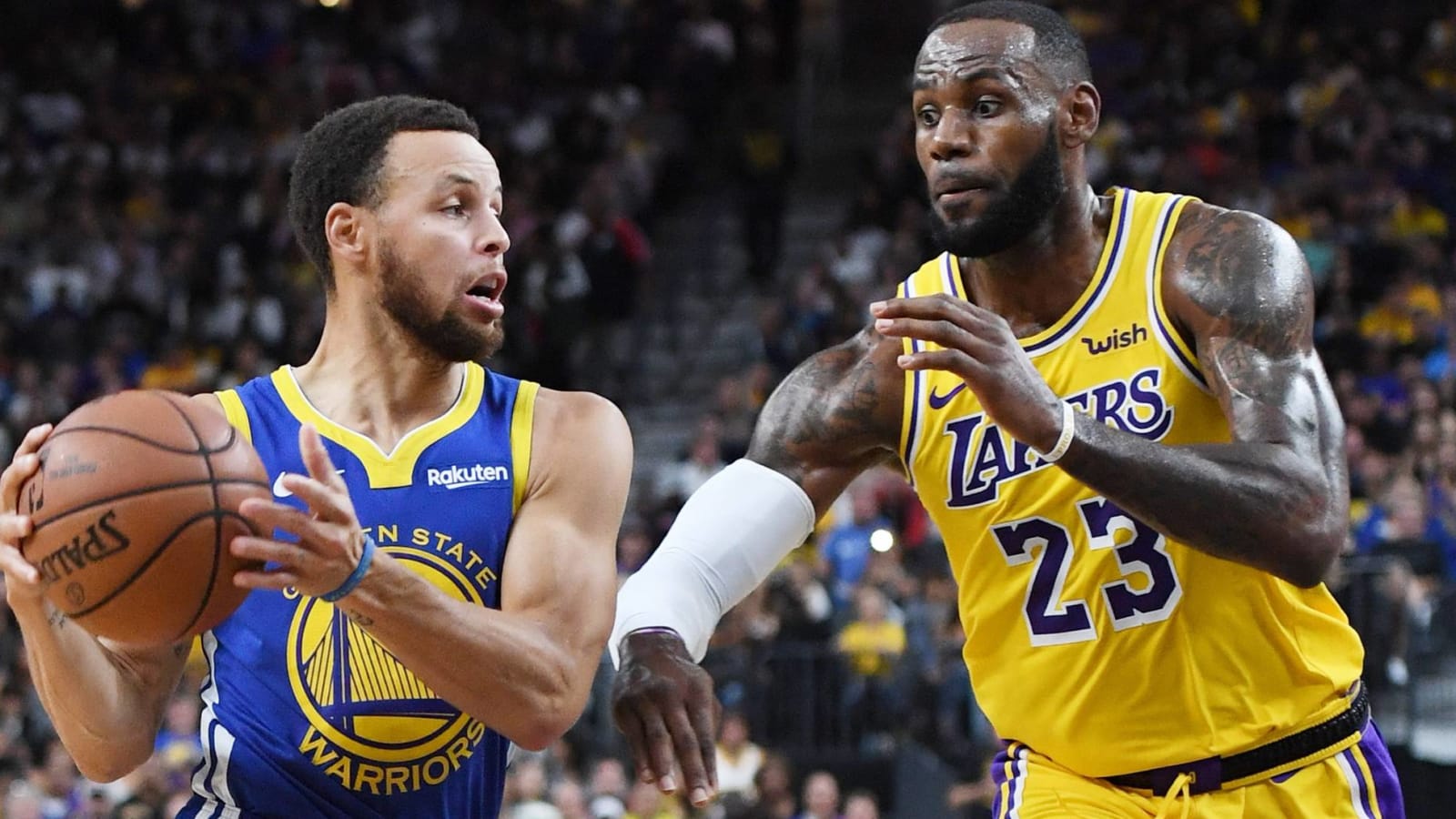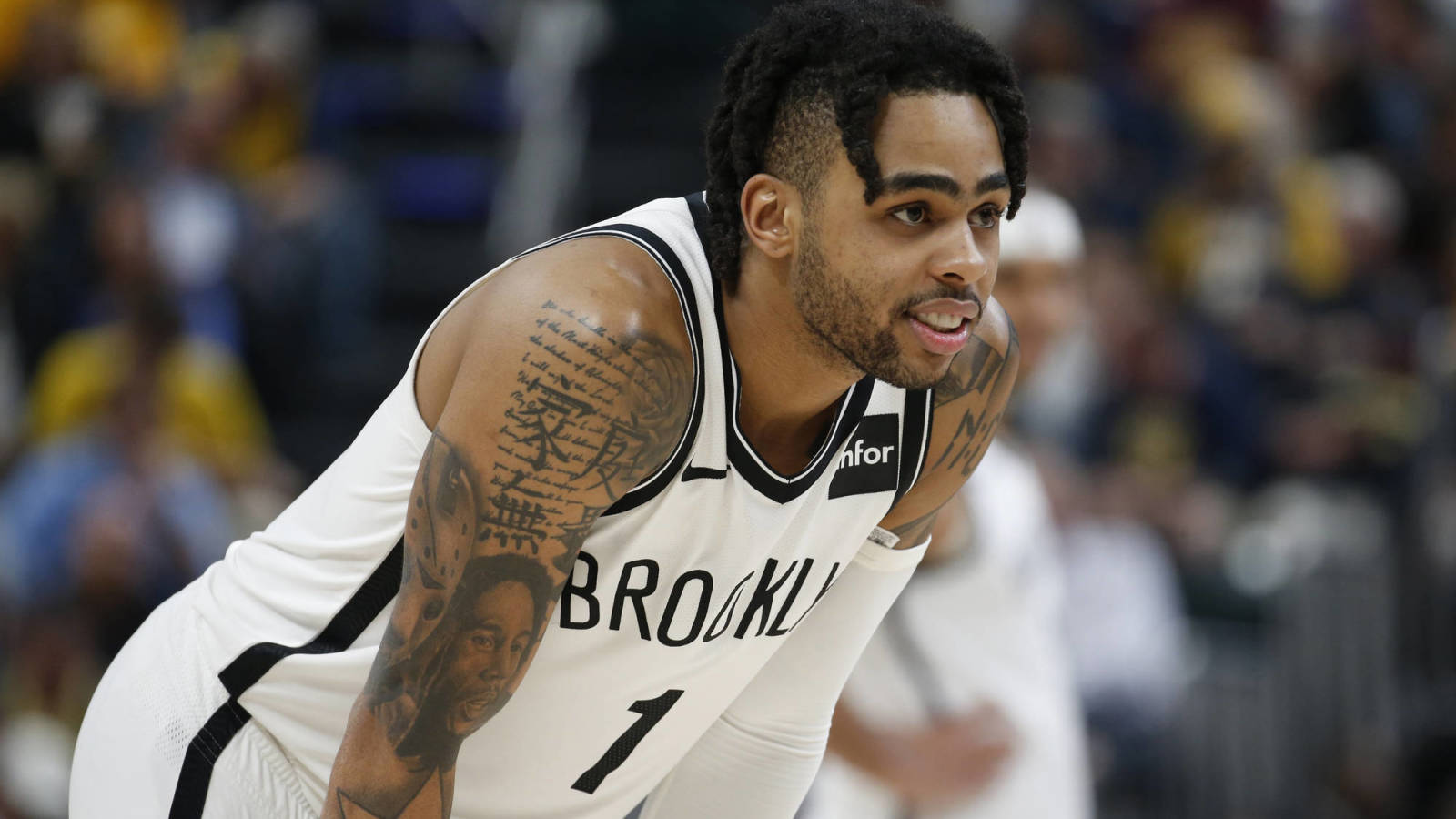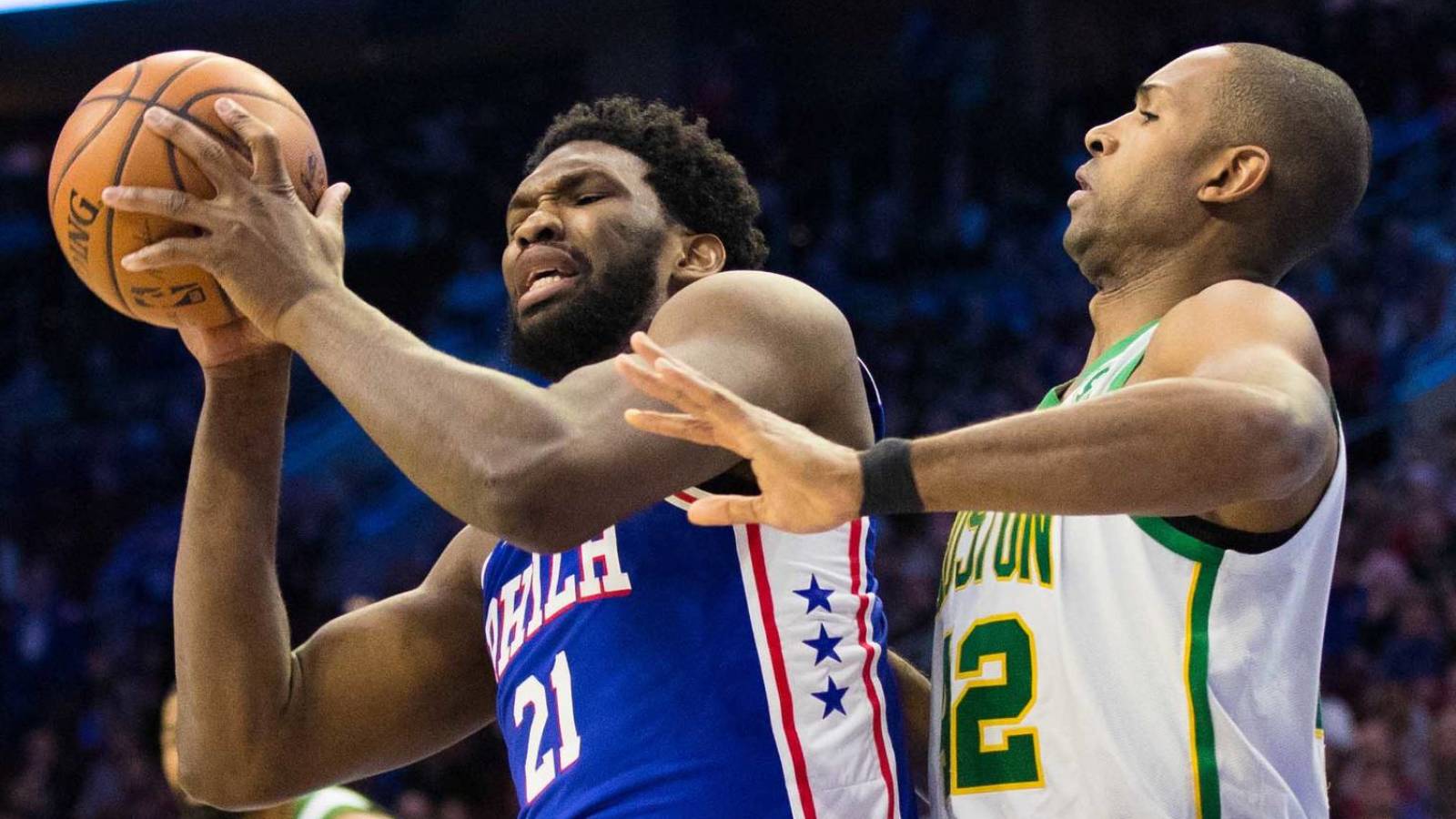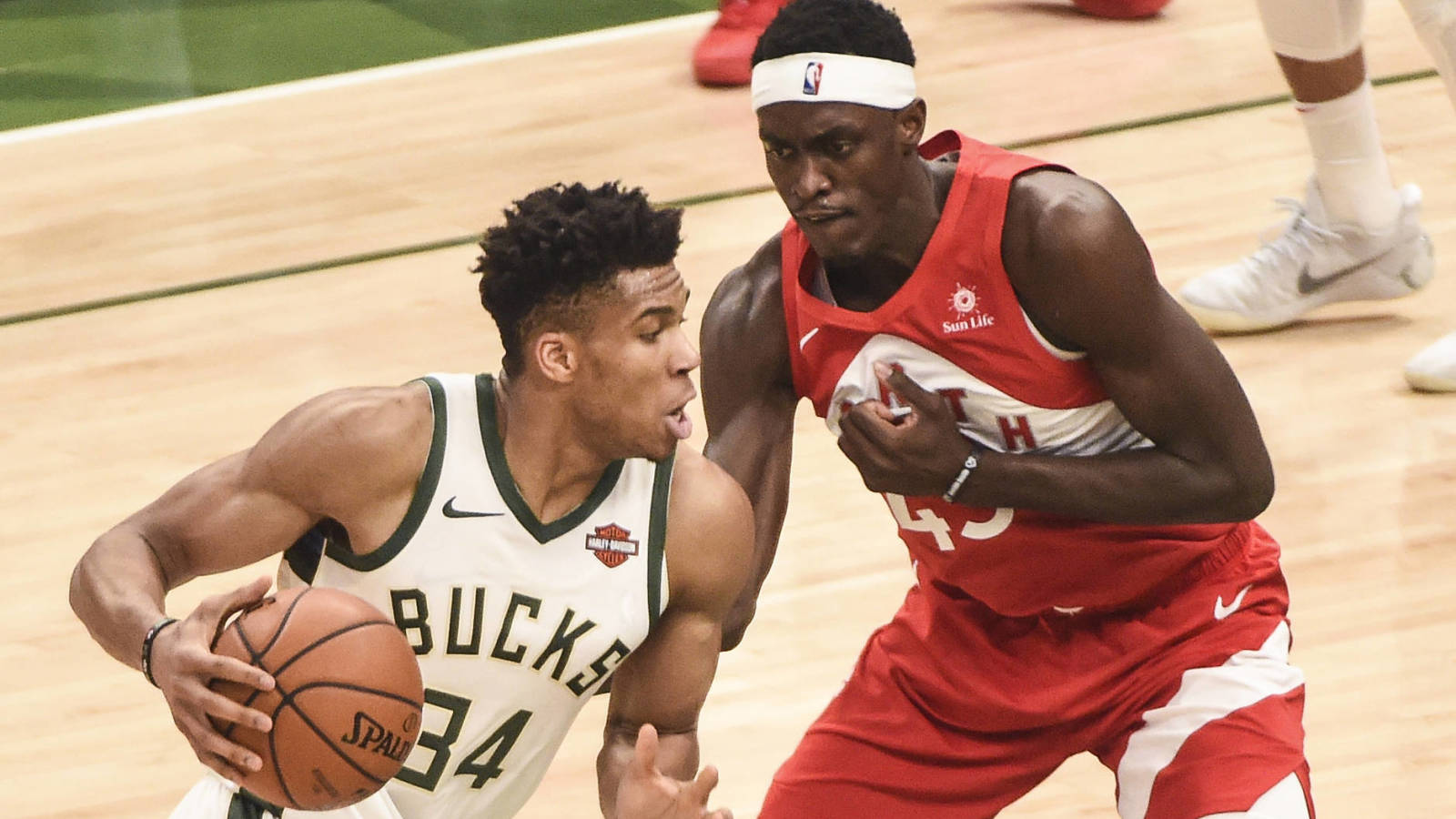
How eight NBA title contenders will play in 2019-2020
Extraordinary player movement this summer makes the NBA as wide open as ever. At least eight teams have a legitimate shot at the 2019-2020 championship, a welcome change for those plagued by Warriors fatigue.
Ever since Steve Kerr replaced Andrew Bogut with Andre Iguodala in the starting lineup of the 2015 NBA Finals, 29 teams have been chasing Golden State and its harmonious yet unstoppable brand of Small Ball basketball, aptly nicknamed "The Lineup of Death." A few teams, such as the Cavaliers and Thunder in 2016, were successful in wearing down this lineup with overwhelming athleticism and physical defense. But once Kevin Durant took his talents to the Bay Area, the healthy version of the Warriors was basically unbeatable. The only conceivable way to take them down was to beat them at their own game of Small Ball, which is what the Rockets valiantly tried and failed to do.
ASSESSING NBA: Contenders | Middle Class | Bottom-feeders
With Durant's departure, it's no longer an absolute requisite for contenders to mirror The Lineup of Death with a Small Ball lineup of their own. In fact, some teams might even be able to dictate the pace and style of play with their own brand of basketball. While Small Ball will still be popular among some contenders, and perhaps remain the most optimal basketball philosophy, other contenders will try to take home the Larry O'Brien Trophy by embracing a more big man-heavy lineup. Still others will rely on their versatility and continuity from previous seasons to do the same.
This year's contenders fit within three categories in terms of the brand of basketball they'll play:
SMALL BALL: Spreading the court with four or even five three-point shooters and two or three ball handlers. They'll have one rim-running, rim-protecting big man.
JUMBO BALL: These teams will still spread the court with capable three-point shooters, but instead of having multiple ball handlers, a Jumbo Ball team will use a LeBron James- or Ben Simmons-type do-it-all player as its facilitator and versatile wings and bigs elsewhere. This brand of basketball puts an emphasis on size and athleticism over speed and quickness at every position.
CONTINUITY (VERSA BALL): These teams have the versatility, depth and continuity to match up with Small Ball and Jumbo Ball lineups. They have the ball handlers and wings to space the court and go small and the facilitating big man who allow them to forgo a traditional point guard in lieu of another big or wing. Depth and continuity from last season's team are a huge advantage for these teams as well.
Let’s examine these three philosophies and how they came to be optimal basketball strategies for contenders in 2019-20. Expect these teams to rely on these philosophies when the games really matter: in the playoffs.

Small Ball and The Lineup of Death
Small Ball wasn’t a new philosophy to the NBA in 2015. In fact, a handful of great teams (1994-95 Rockets, 2006-07 Suns, 2008-09 Magic and 2012-14 Miami Heat) used lineups with four perimeter players and one big man (four-around-one) with enormous success. What made the Lineup of Death unique was that there was no big man at all, allowing for court spacing to the extent no one had ever seen. During the Warriors’ historic 73-9 regular season, their first full season using the Lineup of Death, the team scored at a rate (114.9 ppg) the league hadn’t seen in years, averaging nearly four points per game more than any other team and 11 points per game more than the average team.
Steph Curry and Klay Thompson routinely shot from as far as 35 feet, shifting the gravity of the court on offense and combining for 678 three pointers in 2015-16 alone. Draymond Green emerged as the most versatile defender in the league, protecting the rim like a big man and locking up ball handlers like an elite wing defender. Green and Iguodala’s point guard-like playmaking skills on offense created numerous layups and dunks as teams were preoccupied trying to account for Curry and Thompson. Finally, Harrison Barnes’ underrated post defense kept other big men in check and his shooting was adequate enough to keep defenses honest. (When the team replaced Barnes with Durant for the 2016-17 season, Small Ball was perfected in a way that will never be replicated.)
Not only did this playing style render traditional big men useless against Golden State, it made the Warriors better at playing four-around-one Small Ball too. The Lineup of Death was so dominant during the 2015-16 regular season that the Warriors only had to deploy it 172 total regular-season minutes because it outscored opponents by an unconscionable 40.2 points per 100 possessions. The second- and fourth-best lineups in the league that played at least 100 minutes together during that season were also Warriors lineups that merely replaced Harrison Barnes with Andrew Bogut (plus-33.3 net rating) in one and Festus Ezeli (plus-24.1 net rating) in the other.
This season, the Warriors (+1200 title odds) are suited to go with a four-around-one Small Ball lineup. (Of course this assumes that Thompson will return at some point during the regular season and be close to full strength when the playoffs start.)
The subtraction of Durant, now with the Nets, makes this year's squad more comparable to the 2015-16 team. While D’Angelo Russell, acquired from Brooklyn, won’t provide anywhere near the defense played by Iguodala, who's now with Memphis, he’ll more than account for the playmaking (seven assists per game last season) and add a scoring and spacing component that Iggy never could (21 points per game on 37 percent from three). Likewise, while Willie Cauley-Stein and Kevon Looney won’t be able to space the court like Barnes did and aren’t the same type of intellectual defenders and passers as Bogut was, they can rim-run and rim-protect better than Barnes or Bogut, which will allow the Dubs to play at breakneck speeds next season.
The other title favorites, the Clippers (+333), Jazz (+1600) and Rockets (+700), will embrace four-around-one Small Ball lineups this year too. LA’s defensive potential is impressive as it has the two best wing defenders in basketball in Kawhi Leonard (two-time Defensive Player of the Year) and Paul George (2018-19 steals leader) to go with all-world irritant Pat Beverley (two-time All-Defense). They also have arguably the best pick-and-roll combination in the league with Lou Williams (fifth-best ball handler) and Montrezl Harrell (third-best roll man), giving the Clippers one of the best closing lineups in basketball.
I wrote “arguably the best pick-and-roll combination” because the Jazz’s Donovan Mitchell (fourth-best ball handler) and Rudy Gobert (second-best roll man) were elite last season too. Utah may have lost some of the continuity that helped it finish as a top-three defense each of the past three seasons, but the Jazz replaced bricklayers Ricky Rubio and Jae Crowder with Mike Conley (career 37.5 percent from three) and Bojan Bogdanovic (42.5 percent from three). Utah’s Small Ball lineup won’t be the most entertaining, but it should be among the best in the league.
Rounding out the Small Ball contenders, the Rockets will force opponents to slow 48 minutes of relentless attacking from James Harden (36 points, seven rebounds and eight assists per game), Russell Westbrook (23 points, 11 rebounds and 11 assists per game) and Eric Gordon (18 points on 40 percent three-point shooting in the playoffs). If 25-year-old big man Clint Capela (17 points, 13 rebounds and two blocks per game) can improve and anchor the team’s defense along with defensive stalwart and corner-three specialist PJ Tucker, Houston will be right in the ring-chasing mix.

The Jumbo Ball Movement
In the 2016 playoffs, the Cavaliers and Thunder were able to construct the blueprint to counter the Lineup of Death. The Cavs' most effective lineup in the Finals -- Tristian Thompson, Richard Jefferson, LeBron James, JR Smith and Kyrie Irving -- could match up with the Lineup of Death well enough to allow its size advantage to wear down the Dubs and destroy them on the boards, outrebounding them by 28 rebounds (307-279) for the series . Likewise, the Thunder’s best lineups -– Serge Ibaka (or Steven Adams), Kevin Durant, Andre Roberson, Dion Waiters and Russell Westbrook –- were also able to push the Warriors to the brink with overwhelming athleticism as they outrebounded the Warriors by 35 rebounds (337-302) in the Western Conference Finals.
This Jumbo Ball counter to Small Ball is making a return this year after a brief hiatus during the Hamptons Five era as the 76ers (+900) and Lakers (+400) have gone full tilt with it, eliminating the point guard altogether. In reality, Small Ball and Jumbo Ball aren’t all that different from one another: Both favor positional versatility, aim to get the team’s most talented players on the court at the same time, and attempt to maximize shot efficiency by ending as many possessions as possible in three-pointers, shots in the paint and free throws -– the most efficient possessions in basketball –- in lieu of any mid-range shots. The main difference is that Jumbo Ball favors size over speed.
Speaking of which, the Sixers will have one of the tallest starting lineups in NBA history this season, with an average height of over 6-foot-9. Having two centers -– 7-foot Joel Embiid and 6-foot-10 Al Horford -– as the best players on the team gives a whole new meaning to Jumbo Ball. It's so rare that you must look back to the late '90s (David Robinson and Tim Duncan) and mid-'80s (Ralph Sampson and Hakeem Olajuwon) to find championship-level historical parallels. Having a 6-foot-10-point guard in Ben Simmons doesn’t hurt the Jumbo Ball movement either. With the team going all-in on size and defense, it will ironically make the other two starters (6-foot-9 Tobias Harris and 6-foot-6 Josh Richardson) the most important players on the team as both will be relied upon to make defenses honest from the perimeter (they are 40 and 36 percent three-point shooters, respectively) while defending perimeter players on the other end of the court.
The Lakers are the West Coast foil to the Sixers, sporting an average height of over 6-foot-8 in their LeBron James-Danny Green-Kyle Kuzma-Anthony Davis-DeMarcus Cousins jumbo lineup. While only Green (46 percent from three) is an elite shooter of that mix, the rest of the lineup is plenty comfortable hoisting threes to space the court as only Davis attempted less than three per game last season (2.6 per game). Expect to see this lineup used primarily in the playoffs because the Lakers won’t want to wear Green down in the regular season chasing point guards all over the court. However, when they do go jumbo with LeBron as facilitator, the team should dominate the restricted area and boards better than any team west of Philly.

Versa Ball and the Benefit of Continuity
Rounding out the title contenders, the Bucks (+500) and Nuggets (+2000) will bring back essentially the same versatile young cores from last season. Despite losing Malcolm Brogdon in free agency, Milwaukee, last year’s best regular-season team, will look to last year’s MVP Giannis Antetokounmpo to make another leap to become the unquestioned best player in the league.
Giannis’ two-way versatility, combined with Khris Middleton and Eric Bledsoe’s defense, and Brook Lopez’s court spacing (37 percent from three) and rim protection (two blocks per game), allow the Bucks to match up with most any lineup. They can play Jumbo Ball by adding Robin Lopez or DJ Wilson to the mix. Or they can play some form of Small Ball by subbing in a veteran shooter such as Wes Matthews (career 38 percent from three), Kyle Korver (career 44 percent from three) and George Hill (career 38 percent from three).
Lastly, the Nuggets added a good three-and-D forward (Jerami Grant) and two low-risk, high-reward rookies (Michael Porter Jr. and Bol Bol) to what was already the deepest team in the league last season. Although the Nuggets were upset in the second round, last year’s playoff run erased any doubt that superstar Nikola Jokic could be the best player on a championship team. He averaged 25 points, 13 rebounds and over eight assists per game in 14 playoff games. Denver has the best young core in basketball , with every rotation player besides Paul Millsap younger than 30 years old. Expect Jokic and guards Jamal Murray, Gary Harris and Malik Beasley to take another step forward and compete for the best record in the NBA in 2019-20.
More must-reads:
- 76ers big man gives Knicks bulletin-board material ahead of first-round matchup
- Warriors 'want' Klay Thompson back with team next season
- The 'NBA Slam Dunk Contest winners' quiz
Breaking News
Customize Your Newsletter
 +
+
Get the latest news and rumors, customized to your favorite sports and teams. Emailed daily. Always free!

